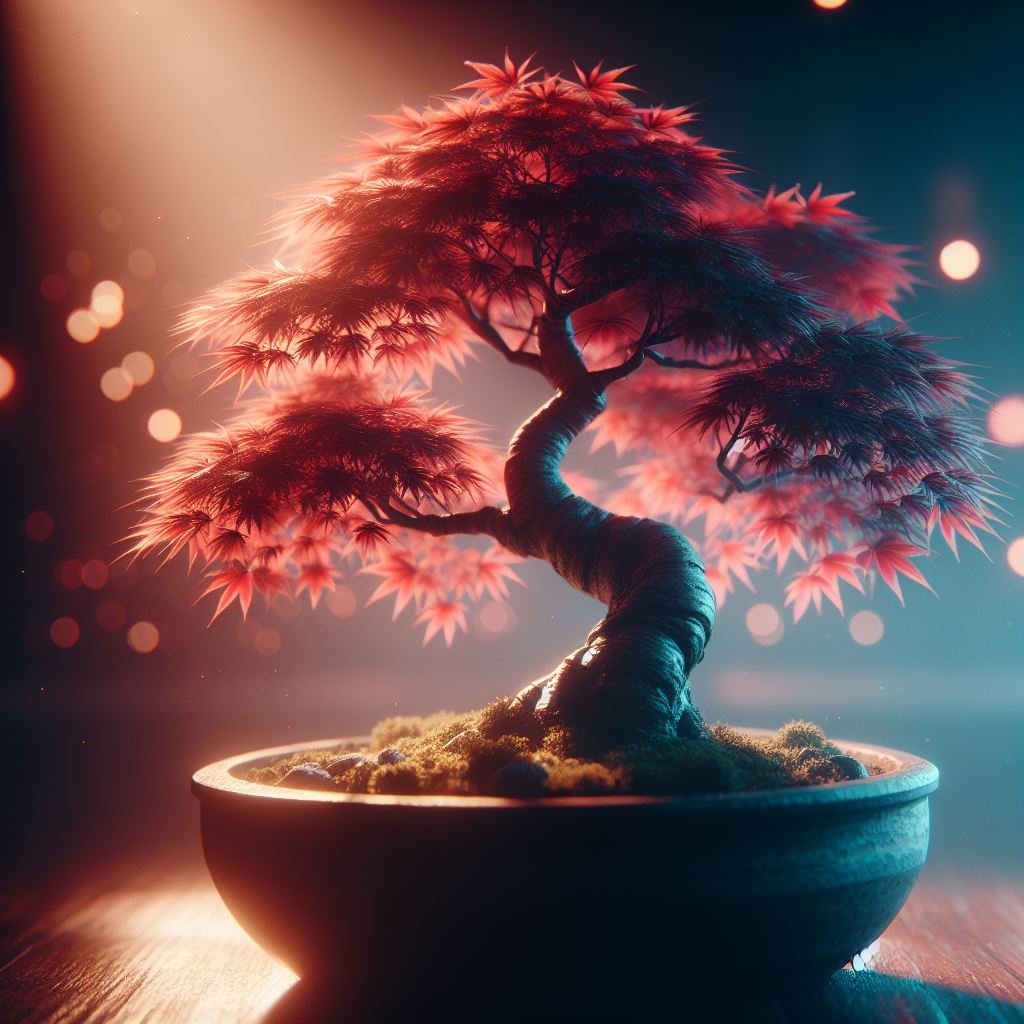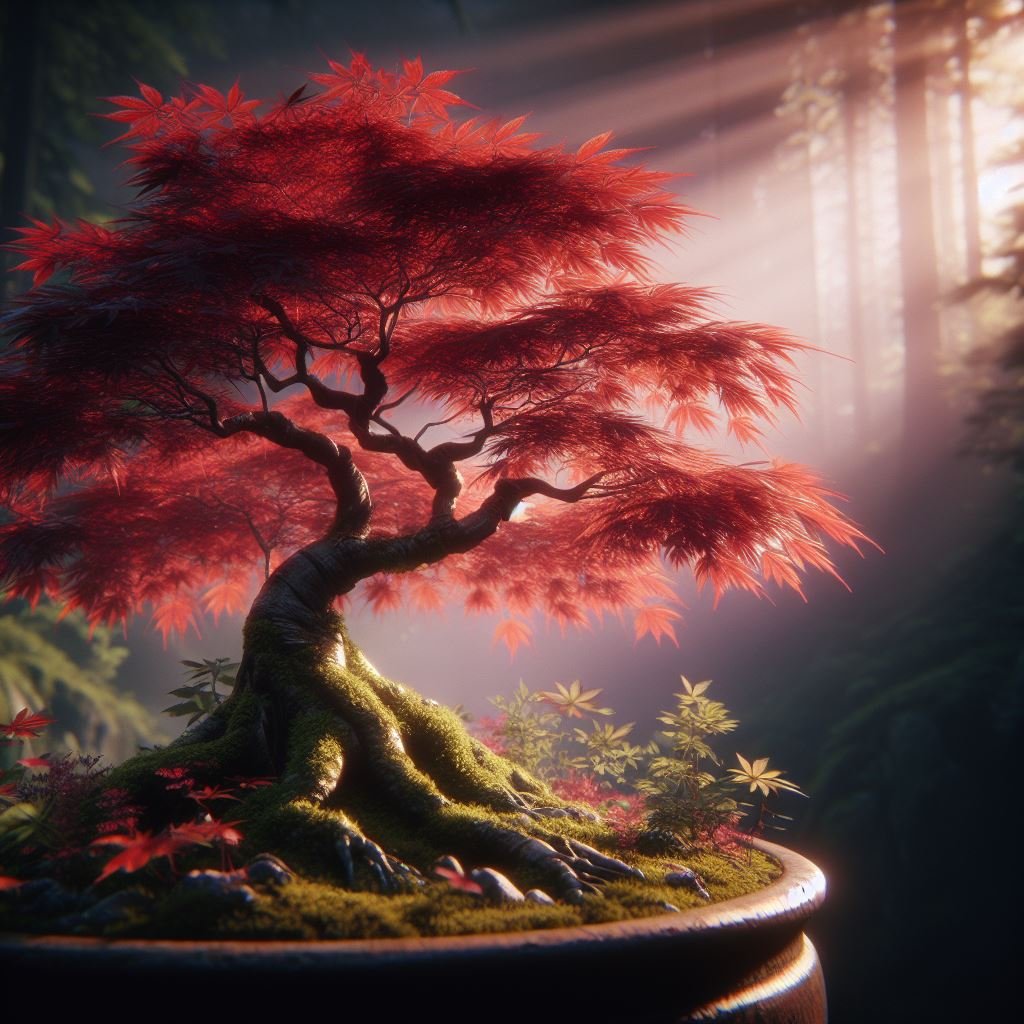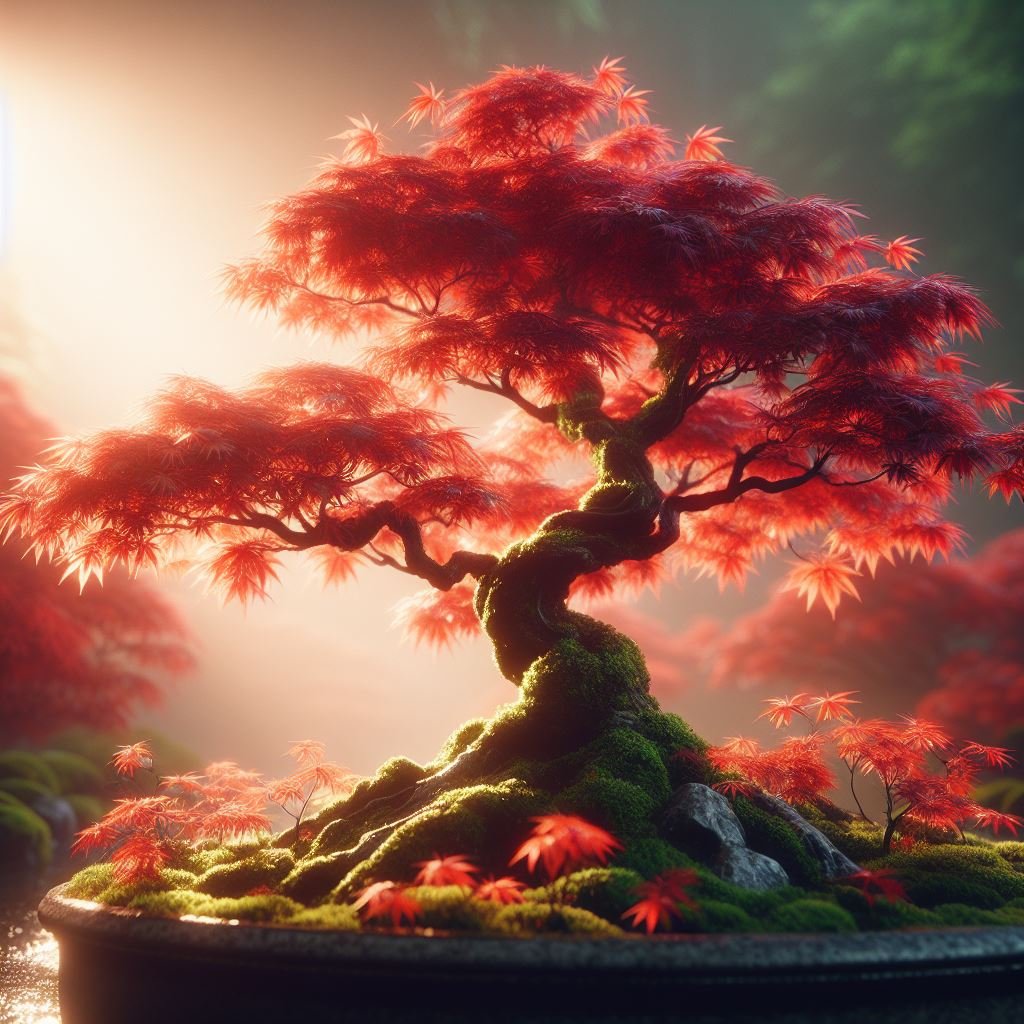Embrace the captivating world of bonsai artistry with the Acer rubrum, or Red Maple Bonsai, a North American native known for its vigor and dynamic fall colors. Renowned for its adaptability and resilience, this species offers both novices and seasoned bonsai enthusiasts an opportunity to experience the enchanting process of nurturing and shaping a living sculpture. Our exploration into the red maple as a bonsai will delve into its unique characteristics, cultivation requirements, and the aesthetic appeal it brings to any collection.
Introduction to Red Maple Bonsai (Acer Rubrum)

Overview of the Species
Acer rubrum, commonly known as the Red Maple, is a deciduous tree that is native to the eastern and central parts of North America. It is a fast-growing tree that can reach heights of up to 60-90 feet in its natural environment. However, when cultivated as a bonsai, it remains a manageable and attractive miniature, embodying the essence of a full-size tree. The Red Maple is renowned for its vibrant fall colors, with leaves transforming from green to spectacular shades of red, orange, and yellow.
Distribution and Natural Habitat
The natural range of Acer rubrum extends from Newfoundland west to Minnesota, and south to Florida and eastern Texas. It flourishes in a variety of habitats, including swamps, forests, and even urban areas, demonstrating its adaptability. As a bonsai, the Red Maple is versatile and can thrive in various climates, as long as it is given appropriate care and protection from extreme conditions.
Red Maple as a Bonsai
Characteristics That Make It Suitable for Bonsai
The Red Maple, or Acer rubrum, is a favorite among bonsai enthusiasts due to its impressive adaptability and striking aesthetics. Its rapid growth allows for quick shaping and development, making it a rewarding project for both beginners and experienced growers. The tree’s small leaves are ideally proportioned for bonsai, and their vibrant fall transformation adds a dramatic seasonal element to the composition. Additionally, the Red Maple’s resilience to pruning and its capacity to backbud on old wood make it an excellent candidate for the art of bonsai.
Comparison with Other Popular Bonsai Species
Compared to other popular bonsai species such as the Japanese Maple (Acer palmatum) or Juniper (Juniperus spp.), the Red Maple offers a distinctly North American aesthetic.
While Japanese Maples are celebrated for their delicate foliage and elegant forms, and Junipers are prized for their rugged, weathered appearance, the Red Maple stands out with its robust growth and spectacular autumn colors.
Its fast growth rate can be more challenging to manage than the slow-growing Juniper, but it also allows for quicker results.
Like the Japanese Maple, the Red Maple requires careful attention to watering and seasonal changes but rewards this care with a stunning display of color and form.
Cultivation of Red Maple Bonsai (Acer Rubrum)

Optimal Growing Conditions
Red Maples thrive in full sun to partial shade conditions. When grown as bonsai, they prefer a well-draining soil mix to prevent waterlogging and root rot. A balanced mix of akadama, pumice, and organic potting compost is often recommended. The trees are hardy and can tolerate a range of temperatures, but they should be protected from extreme heat and frost. During winter, it’s essential to provide a cold period for dormancy but protect the tree from freezing winds or temperatures.
Watering and Nutritional Needs
Acer rubrum bonsai trees need regular watering to maintain their health. However, care should be taken not to overwater or underwater the tree. The soil should be kept slightly moist, not soggy or dry. It’s best to water the tree thoroughly once the topsoil has dried out slightly. As for feeding, Red Maples benefit from a balanced bonsai fertilizer applied during the growing season, typically spring to late summer. It’s important to reduce feeding during the tree’s dormant period in winter.
Pruning and Shaping Techniques
Pruning is an essential part of maintaining the shape and size of a Red Maple bonsai. Young trees can be pruned heavily to encourage branching, while mature trees need more careful pruning to maintain their shape and health. The best time for major pruning is late winter or early spring when the tree is still dormant. Regular pinching back of new growth throughout the growing season helps to maintain the tree’s form and promotes denser foliage. Wiring can be used to shape branches, but care must be taken to avoid damaging the bark. Always remember to remove the wire before it starts cutting into the bark.
Challenges in Growing Red Maple Bonsai (Acer Rubrum)
Common Issues and How to Address Them
Growing Acer rubrum as a bonsai can present some challenges. One common issue is leaf scorch, which can occur if the tree is exposed to harsh sunlight or if watering is inconsistent. This can be addressed by ensuring the tree is placed in an area with appropriate light and by maintaining a consistent watering schedule.
Pests such as aphids and scale insects can also pose a problem. Regular inspection of the tree and prompt treatment with appropriate insecticides can help keep these pests at bay.
Another challenge is root rot, which can result from overwatering or poor drainage. It’s essential to ensure that the bonsai pot has good drainage and that the tree is not left sitting in water.
Tips for Maintaining the Health and Aesthetics of the Tree
To maintain the health and aesthetics of an Acer rubrum bonsai, here are some tips:
- Regular Pruning: Regular pruning helps maintain the tree’s shape and promotes healthier growth. It’s best to prune in late winter or early spring when the tree is still dormant.
- Balanced Fertilizer: Use a balanced bonsai fertilizer during the growing season to support healthy growth and vibrant leaf color.
- Adequate Watering: Ensure the tree gets adequate water but avoid overwatering. The soil should be kept slightly moist, not soggy or dry.
- Protection from Extreme Weather: While Red Maples are hardy, they should be protected from extreme heat and frost to prevent damage.
- Regular Inspection: Regularly inspect the tree for signs of pests or disease. Early detection and treatment can prevent minor issues from becoming major problems.
- Seasonal Care: Remember that Red Maples need a period of dormancy in winter. They should be protected from freezing temperatures but still exposed to cold conditions to trigger dormancy.
The Aesthetic Appeal of Red Maple Bonsai

Seasonal Transformations of Acer Rubrum
One of the most captivating aspects of the Red Maple as a bonsai is its dynamic seasonal transformations. In spring, the tree bursts into life with delicate red flowers before its leaves unfurl. The summer brings lush green foliage that creates a dense canopy, providing a stark contrast to the tree’s intricate branch patterns. However, it is the autumn display that is truly spectacular. As the days shorten, the leaves transition from green to a striking palette of yellows, oranges, and vivid reds. This dramatic change in color adds a powerful visual impact to any bonsai collection and mirrors the natural spectacle of fall in North American forests.
Incorporation into Different Bonsai Styles
The versatility of the Red Maple allows it to be incorporated into various bonsai styles. Its strong, flexible branches lend themselves well to the ‘informal upright’ (moyogi) style, where the trunk bends and twists naturally but maintains an overall upward direction.
For those seeking a challenge, the tree’s rapid growth and adaptability make it suitable for the ‘group planting’ (ikadabuki) style, creating a miniature forest scene within a single pot.
Finally, when grown with a focus on revealing its lower trunk and root structure, the Red Maple can excel in the ‘root over rock’ (sekijoju) style, where roots are trained over a rock to mimic trees growing in rugged mountain landscapes.
Regardless of the chosen style, the Red Maple’s vibrant color changes and robust growth make it a visually striking addition to any bonsai display.
Conclusion
In conclusion, cultivating an Acer rubrum bonsai brings both challenges and rewards. Their resilience and adaptability, coupled with their stunning seasonal transformations, make them a fascinating species to work with. Their care requires a careful balance of watering, feeding, and pruning, along with vigilant protection from pests and extreme weather conditions. Whether you’re a seasoned bonsai enthusiast or a novice, the Red Maple offers an opportunity to engage with nature on a miniature scale and witness the breathtaking spectacle of seasonal change. Embrace the challenges, reap the rewards, and let your Acer rubrum bonsai be a testament to your patience and dedication.
Frequently Asked Questions
How often should I water my Acer Rubrum bonsai?
The watering frequency depends on various factors such as the size of your tree, pot, and the climate. Generally, the soil should be slightly moist, not soggy or dry. It’s always safer to underwater than overwater.
Can I keep my Red Maple bonsai indoors?
While Red Maple can tolerate a range of conditions, they thrive best outdoors, where they can experience seasonal changes that are critical for their health and growth.
When is the best time to repot my Acer Rubrum bonsai?
Repotting is usually done in late winter or early spring when the tree is still dormant. However, young, fast-growing trees may need to be repotted every year, while older trees can be repotted every two to three years.
Why are the leaves on my Red Maple bonsai turning brown?
The leaves might turn brown due to leaf scorch, which can be caused by excessive sunlight or inconsistent watering. Try moving your bonsai to a location with appropriate light and maintain a consistent watering schedule.
How can I prevent pests and diseases?
Regular inspection of the tree and prompt treatment with appropriate insecticides can help keep pests at bay. Ensuring a healthy growing environment with proper watering, feeding, and pruning also helps prevent diseases.
Can I trim my Red Maple bonsai any time of the year?
Major pruning is best carried out in late winter or early spring when the tree is still dormant. However, you can pinch back new growth throughout the growing season to maintain the tree’s form.
Do I need to fertilize my Acer Rubrum bonsai?
Yes, using a balanced bonsai fertilizer during the growing season supports healthy growth and vibrant leaf color. Reduce feeding during the tree’s dormant period in winter.
Can my Red Maple bonsai survive in extreme weather conditions?
While Red Maples are relatively hardy, they should be protected from extreme heat and frost to prevent damage. During harsh winter conditions, they should be protected from freezing temperatures but still exposed to cold conditions to trigger dormancy.
Sources:
- Red Maple as Bonsai
- Three reasons to start growing red maples
- Acer rubrum
- Swamp Maple (Acer rubrum)
- Collected Acer Rubrum
- Red Maple Bonsai
- The Red Maple as Bonsai
- ACER rubrum – Red maple (Bonsai) 5g
- Red Maple Bonsai Tree






Very well presented. Every quote was awesome and thanks for sharing the content. Keep sharing and keep motivating others.
I truly appreciate your technique of writing a blog. I added it to my bookmark site list and will